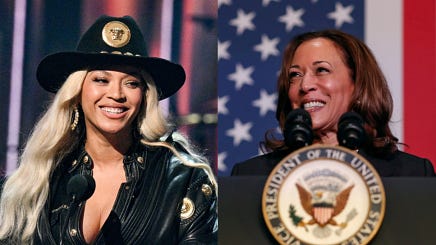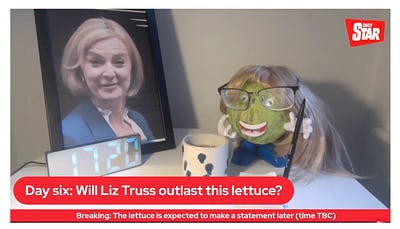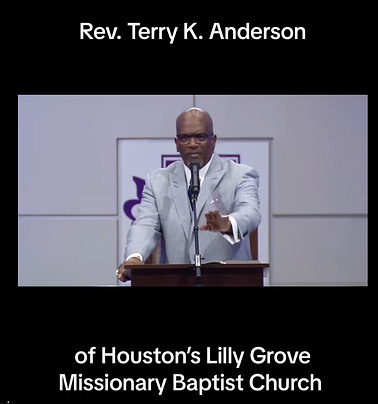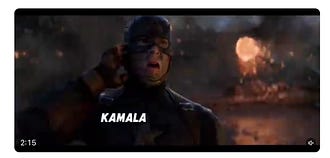Why so many candidates? How did this happen?
If you’re puzzled by all the names and (sometimes) obscure elective offices that appear on the August Primary ballot, you’re not alone. (If you haven’t received your ballot—or you’ve lost track of it—contact your local county elections office today. Here’s a useful link that should easily get you to your county elections office website.)
Why, you might ask, are there twenty-eight listed candidates for Washington State governor? Must I read the blurb on each of these candidates in order to choose? Here’s good news: If you want an elections guide that rationally presents a preferred candidate for most races consult the Progressive Voters Guide. The “Other Candidates” section of the Guide for most offices offers perspective—and might save you from wasting a vote on a fringe candidate with no real campaign. For example, the Progressive Voters Guide recommends Bob Ferguson, the current Washington State Attorney General for governor, but offers perspective on just three other candidates—the only ones mounting remotely effective campaigns. Check out the Guide.
Vote, turn in your ballot, and urge your like-minded friends to do the same. Everything below is the result of my effort to better understand our primary system. I hope you’ll find it interesting—but what appears below is of less important than voting your ballot and submitting it this weekend!
Why is all this so complicated?
The U.S. Constitution leaves most of the details of election structure and management to the individual state governments—partly the product of the transportation and communication strictures of the time. As a consequence, different states hold primary elections on sometimes vastly different dates and by different rules. For example, our neighbor Idaho holds primary elections for state and local offices in May rather than August. Idaho’s currentprimary elections are party specific, i.e. in order to vote on the Republican Primary ballot one must declare oneself a Republican and, having made that declaration, one can only vote for candidates on that ballot. (Those rules could change by initiative this fall.)
In view of this panoply of election rules and dates for primary elections it is a wonder that we have managed to regularize the date for the general election to the first Tuesday in November. It turns out that a national date for the general election of presidential electors was established by federal law in 1845 in response improved communication (click here for the whole article):
Development of the Morse electric telegraph, funded by Congress in 1843 and successfully tested in 1844, was a technological change that clearly augured an imminent future of instant communication nationwide.[6] To prevent information from one state from influencing Presidential electoral outcomes in another, Congress responded in 1845 by mandating a uniform national date for choosing Presidential electors.
State and local officials often (but not always) appear on the same November general election ballot as a matter of convenience and cost savings:
Many state and local government offices are also elected on Election Day as a matter of convenience and cost saving, although a handful of states hold elections for state offices (such as governor) during odd-numbered off years, or during other even-numbered midterm years, and may hold special elections for offices that have become vacant.
All that explains a lot about the near universality of the general election, but the rules and dates for primary elections vary wildly from state to state. In our mobile society learning civics in one state may not help you much if you move to another. It state has developed its own rules. Political science majors and political party operatives take advantage of our ignorance. Here’s a place to start looking at the variations in primary elections by state.
Another consequence of this state-to-state variation in primary election rules and dates is that the national media focus our attention on the presidential candidates and often ignore state primaries. Can anyone else identify with my surprise years ago when I moved to Washington State, registered to vote, and heard there was an election in August??
Washington State’s “Top Two” Primary
Click here for the step-by-step “History of the Washington State Primary”from the Washington State Secretary of State’s office. Briefly, from 1935 to 2003 Washington State held a “blanket primary” in which:
Except for presidential primaries, all properly registered voters can vote for their choice at any primary for “any candidate for each office, regardless of political affiliation and without a declaration of political faith or adherence on the part of the voter.” Under the blanket primary system, citizens may vote for a candidate of one party for one office, and then vote for a candidate of another party for the next office, and engage in cross-over voting or “ticket splitting.”
Note that, as I understand it, this system still gave the political parties a role in vetting candidates and offering them up to the voters in the primary election, that is, the way to the primary ballot was through the party system of one of the parties.
Enter California and the U.S. Supreme Court. In 1996 California Initiative 198 was passed by the voters. It tried to convert the California primary election from a closed primary in which one had to declare a party and vote only among candidates of that party (like voting Republican in the current Idaho’s primary system) to a blanket primary that was either the same as or very similar to the system Washington State had been using since 1935. But, oh boy, the political parties in California didn’t like that loss of control at all. They filed suit in a case California Democratic Party v. Jones alleging that the blanket primary violated their First Amendment right of association. The case went to the U.S. Supreme Court, where the blanket primary system was struck down in a 7-2 vote with majority opinion written by Antonin Scalia. Ginsburg and Stevens dissented. Stevens wrote: “This Court’s willingness to invalidate the primary schemes of 3 States and cast serious constitutional doubt on the schemes of 29 others at the parties’ behest is an extraordinary intrusion into the complex and changing election laws of the States.”
In Washington State, years of legal and voter initiative turmoil ensued. (Read here for details.) Finally, in 2008 Washington State ended up with U.S. Supreme Court approval of our current “Top two” system. In 2004 the voters passed I-872 with 60% of the vote, but it took four more years of legal cases and wrangling to finally yield the “Top two” primary we have since used. Ironically, after all that, Washington State wound up with a primary system that leaves the political parties with even less control than they had under the long-standing-but-U.S.-Supreme-Court-invalidated “blanket” primary system we had conduced primary elections under for more than 65 years. Scalia’s intrusion be damned.
As a consequence of all that controversy in Washington State primary elections any number of candidates can register to run—no vetting or prior approval by any party is necessary. Candidates get to declare whatever they want as “Prefers _____” without any approval by anyone. The result is the cluttered and confusing ballot you may now have in front of you. The political parties are reduced to declaring endorsements for the candidates they favor, trying to get the word out to the party faithful, and offering financial and person-power assistance. Further irony: under “Top two” primary rules we sometimes are left to choose between two Republicans or two Democrats in the November General Election.
More Details
Just looking at the ballot, even with the now-legally-required county Voters’ Pamphlet in hand, you could still be left to wonder why some races appear on the ballot and others don’t—or wonder what the geography is of the areas from which the various candidates are elected.
Here are a few rules (some of which apply only to Washington State):
A lot depends on length of term. For example, U.S. Senators like Maria Cantwell come up for election every 6 years. That produces an alternation between presidential election years like 2024 and mid-term elections like 2022. (Of course, with just two U.S. Senators that means that in one third of the even-numbered election years neither of the Senators will appear on a ballot!) U.S. Representatives appear on the ballot every even numbered year. Similarly, Washington State Representatives to the State Legislature also appear every second year, while State Senators are on a 4 year rotation. About half of the state senate seats are up for election in even-numbered years coincident with presidential election years like this year, and about half are up in the “mid-term” even-numbered years like 2022.
Unless there is an opening to be filled or affirmed, all the state executivebranch positions appear on the primary ballot coincident with presidential election years like 2024. All the federal, state, and even county commissioner positions that are up for election appear on the primary ballot (and the general election ballot) even if only one candidate files for the position.
But from there on is where it gets a bit odd. In Washington State we elect our state level judges (unlike federal judges who are appointed by the president and must be approved by the U.S. Senate). In our current day hyper-partisan political environment it feels a bit unnerving to be asked to choose among candidates for judgeships. Other than consulting with friends who are familiar with the system, on what basis are the voters supposed to judge judicial candidates? It’s tricky business. They don’t exactly advertise their partisan leanings (judgeships are nominally non-partisan)—even though it is perfectly clear from recent events that some judges (at least in the federal system) are very partisan indeed.
Judgeships appear on the primary ballot only when three or more candidates file for a particular position as in Washington Supreme Court Justice Pos. 2, an open seat for which I favor Sal Mungia. The “Top two” primary election winners for Pos. 2 will advance to the November General Election ballot. Washington State Supreme Court justices serve 6-year terms, and must be younger than 75 years. Often justices are first appointed by the governor to replace a justice who is stepping down. They then need to stand for election in the next even year in order to fill out the term of the retiring justice—and stand again when the term associated with the Position runs out. Positions 8 and 9 will appear on the November ballot along with the contested Pos. 2 “Top two” primary winners. (Mathematically, considering six year terms, each even-numbered year three of the positions should be at least on the November General election ballot.
In Spokane County there are two contested County Superior Court Judgeships (of thirteen total positions), Positions 8 and 11. Only the Position 11 race, with three challengers to Judge Fennessy (who is the incumbent and my choice), appears on the primary ballot. Position 8 (held by incumbent Marla Polin) has just one challenger and, therefore, this race, by the state rules, advances to the November ballot without appearing on the primary ballot at all. Roughly half of the Spokane County Superior Court judge positions (including the two contested positions) will appear on the November ballot, even those without challengers. Judges serve four year terms. The other superior court judges will come up again in the mid-term election in 2026.
Some of you might find a Republican or Democratic Precinct Committee Officer race on your Primary ballot, but only if two or more candidates are running to represent their party in one precinct. Otherwise (RCW 29A.52.171) a single PCO candidate “wins” just by filing for candidacy every two years and, without a challenger, never appears on a ballot (PCO candidates are chosen by the vote in the primary only.
Maps of Districts
Reliable, readable maps of all these overlapping electoral districts (modified usually every decade) are surprisingly hard to come by—but once found they’re pretty they are pretty interesting. Here are some links:
Perhaps obviously, all the Washington State executive branch elected offices, like State Auditor, Commissioner of Lands, Secretary of State, etc. are elected by all the voters in a single district—Washington State itself. The same is true for the federal office of Senator.
Legislative Districts (LDs), the districts that elect Washington State senators and State representatives are probably best seen here:
(You’ll have to search on Google. WordPress refused to copy the link.)
By clicking different options under the “layers” icon (second from the right upper strip of symbols) you can choose to see the boundaries of the forty-nine LDs.
By clicking another choice under the same icon you can explore the ten federal Congressional Districts (CDs) from which Washington State voters elect ten U.S. Representatives to the U.S. Congress (think McMorris Rodgers in CD5, “our” eastern Washington CD). Play with this map if geography offers orientation for the way your brain works.
Most of the county elective positions are elected by voters of the full county. The exception is the five new County Commissioners (See The Spokane County Commissioners for more detail. Three of the Spokane County Commissioners are up for election—but only one, Al French in District 5 (SW county) has drawn a a very credible challenge in Molly Marshall, a retired Air Force pilot, well versed in the wildfire, infrastructure, PFAS concerns of the West Plains and Latah communities that Mr. French has badly ignored and actively stonewalled while he served the developers of the area, especially around Spokane International Airport. Commissioners Chris Jordan (District 1) and Josh Kerns (District 3) appear on ballot of voters living in the Districts they represent (not county-wide) but both Kerns and Jordan are running unopposed. Commissioners Amber Waldref (District 2) and Mary Kuney (District 4) will appear on the ballot during the 2026 election cycle.
Have a look at the map of the new districts. (Click here to see the map online where it might be easier to magnify and examine it. It is not an easy map to read.) Here is a much more readable map based on Googlemaps (but lacking the municipal boundaries). Take note that the five districts are required to contain roughly equal populations. The geographic size of each District hints at the overall average population (and voter) density.
There are some other arcane details, but the hour is late, this is getting long. Congratulations if you’ve read this far!
Vote your ballot! Turn it in promptly
Keep to the high ground,
Jerry
P.S. If you already voted your ballot and either mailed it in (postage is pre-paid) or (better) put it in one of the official drop-boxes—and, a few days later, checked at vote.wa.gov to see that it has been accepted, then congratulations! You are one of a small percentage of voters who didn’t put off their homework. If you’re not among those folks, this weekend is time to dig up your ballot from the junk mail pile, vote it, and turn it in. The deadline is postmarked before (not a sure thing if you’re mailing on Monday or Tuesday) or placed in a ballot drop-box before 8PM on Tuesday, August 6.




